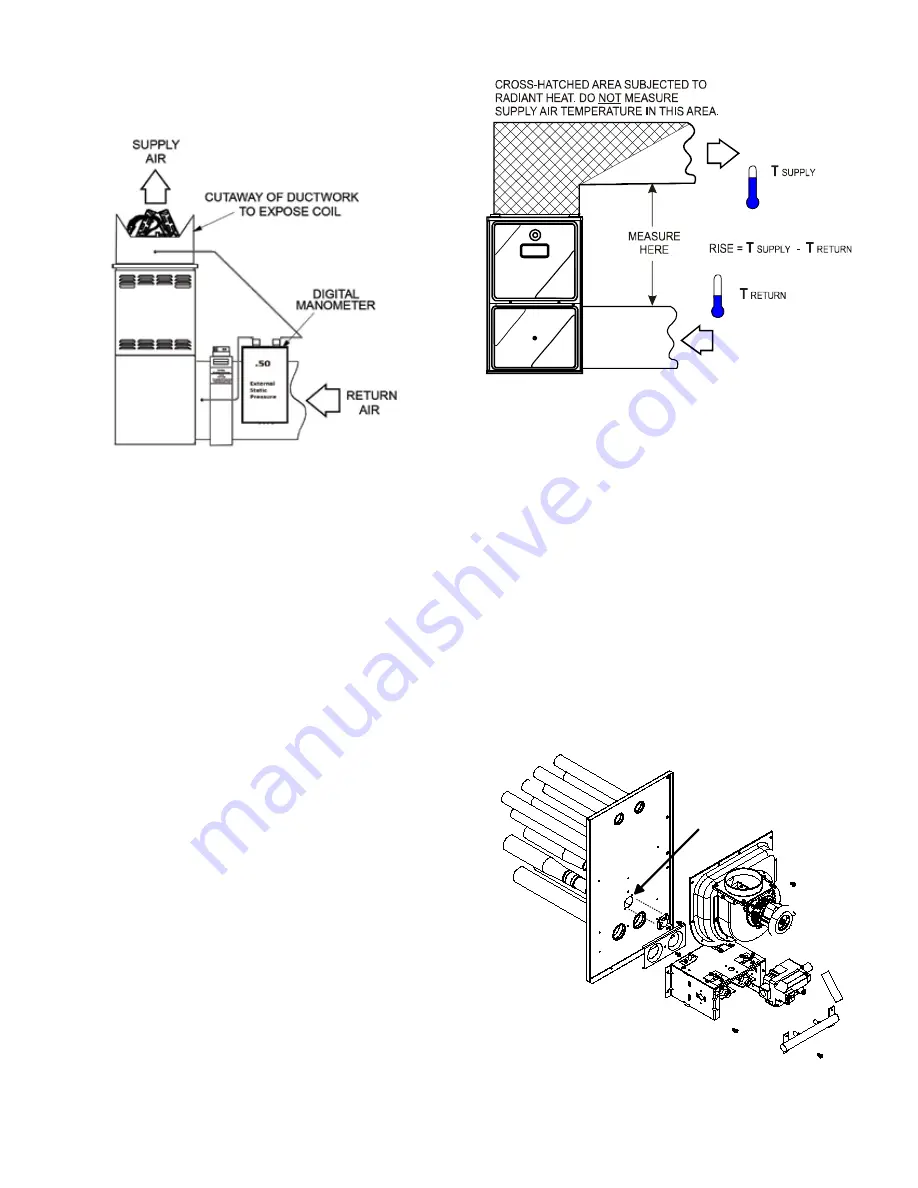
46
SERVICING
If the total external static pressure exceeds the minimum or
maximum allowable statics, check for closed dampers, reg-
isters, undersized and/or oversized poorly laid out duct work.
Checking Static Pressure
(80% Furnace Shown, 90% Similar)
S-201
CHECKING TEMPERATURE RISE
The more air (CFM) being delivered through a given fur-
nace, the less the rise will be; so the less air (CFM) being
delivered, the greater the rise. The temperature rise should
be adjusted in accordance to a given furnace specifications
and its external static pressure. An incorrect temperature
rise may result in condensing in or overheating of the heat
exchanger. An airflow and temperature rise table is provided
in the blower performance specification section. Determine
and adjust temperature rise as follows:
1. Operate furnace with burners firing for approximately ten
minutes. Check BTU input to furnace - do not exceed
input rating stamped on rating plate. Ensure all registers
are open and all duct dampers are in their final (fully or
partially open) position.
2. Place thermometers in the return and supply ducts as
close to the furnace as possible. Thermometers must not
be influenced by radiant heat by being able to “see” the
heat exchanger.
SUPPLY
AIR
RETURN
AIR
Checking Temperature Rise
3. Subtract the return air temperature from the supply air
temperature to determine the air temperature rise. Allow
adequate time for thermometer readings to stabilize.
4. Adjust temperature rise by adjusting the circulator blower
speed. Increase blower speed to reduce temperature
rise. Decrease blower speed to increase temperature
rise. Refer to
Circulator Blower Speed
section in the
Product Design section of this manual for speed chang-
ing details. Temperature rise is related to the BTUH out
-
put of the furnace and the amount of air (CFM) circulated
over the heat exchanger. Measure motor current draw
to determine that the motor is not overloaded during
adjustments.
S-300 CHECKING PRIMARY LIMIT CONTROL
All use a nonadjustable, automatic reset, bi-metal type limit
control. Refer to the following drawing for the location of
the primary limit.
Location of Primary Limit
Primary Limit Control Location
(80% Upflow Furnace Shown, Counterflow Similar)









































